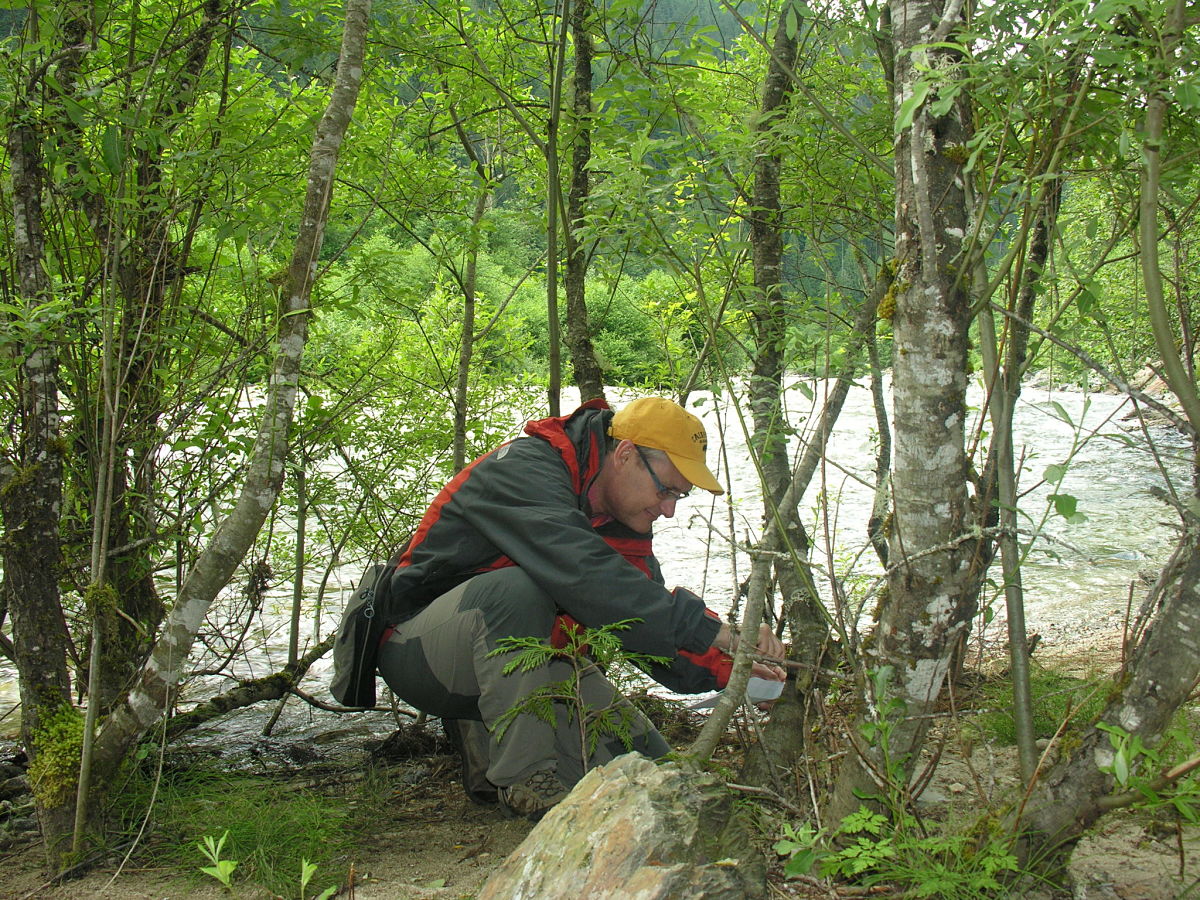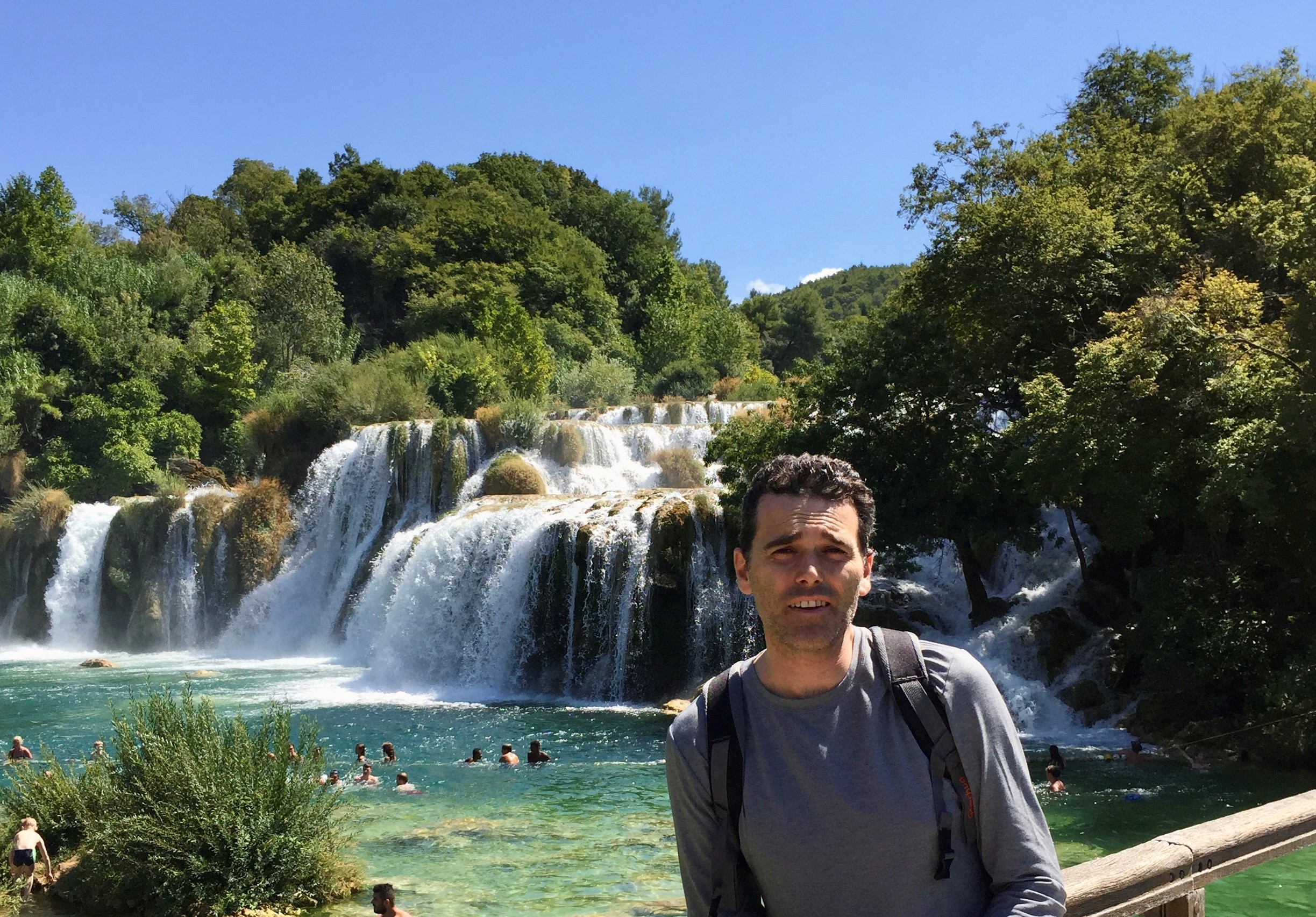Botanist of the month: Pablo Ferrer
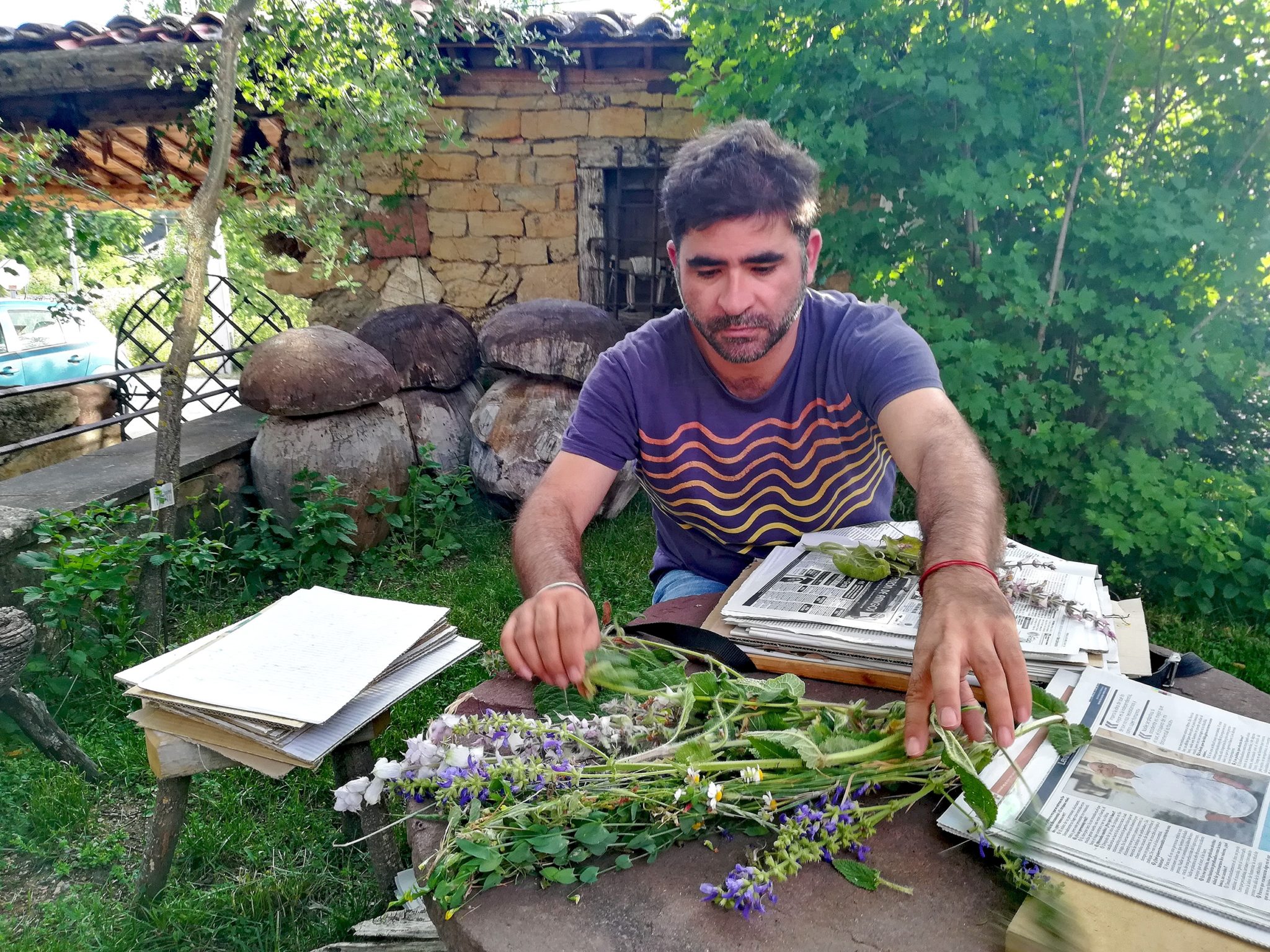
The conservation of endangered plant species is the great challenge this doctor in biological sciences faces every day at the CIEF (Centre for Forestry Research and Experimentation) of the Department of Agriculture, Rural Development, Climate Emergency and Ecological Transition of the Generalitat Valenciana, through a great number of research projects in collaboration with the University of Valencia among other institutions. Such a fascinating, essential and complex field, especially in this context of environmental emergency, for which Pablo cannot imagine anything other than teamwork combined with the important role that ecological restoration plays, what he calls “biology of recovery”.
What attracted you to Botany?
Ever since my last years of high school, specially the last one, I developed an interest in Natural Sciences. I owe this interest to one of my science teachers at the time, Juan Antonio de la Torre García, with whom I went on my first fieldwork trip to a mountain area: a route across Benagéber (Utiel-Requena, where I had attended high school). We walked the whole day and I was in charge of photography, so I had to carry a heavy camera around and document everything that we saw that day; that is, animals, plants, minerals, fossils, etc. This was a turning point for me, since I had been asked to document the trip given my good marks in that subject, which could not be said about others, as I was a rather mediocre student who used to frequently fail exams, but who was good at natural sciences.
Apart from my science teacher, Juan Antonio was also the class coordinator, which allowed me to get closer to him. I particularly remember a private conversation with him in which he basically advised that I fought for what I enjoyed doing, going past beyond difficulties along the path. He was talking about the other subjects, which he knew I saw then as a waste of time, since I was deeply unmotivated. Over time I eventually understood what made me feel that way: it was because what I actually liked were natural sciences!
By the end of high school, I was certain about wanting to study something to do with sciences, but I was not sure about what I liked most, unable to choose between Geology, Biology and Chemistry. I would have probably opted for Geology could I have studied it in Valencia, but since that was not the case, I finally chose Biology. In fact, one of the fields that attracted me the most at the time were human physiology and anatomy, but as I did not want to study Medicine, I thought that I could approach this discipline through Biology.
And so I moved to Valencia and started university, which was a radical change for me as someone who came from a very small village with just over 100 inhabitants. I had a good start, with chemistry remaining as my favourite subject throughout my first year and obtaining good qualifications in some subjects. Things got even a lot better during the second term, as we started studying subjects more related to what I thought at the time we were supposed to learn in this degree.
The second year was decisive: the year I had the theoretical Botany module taught by Juan Alcober, which I can perfectly remember and whose classes fascinated me. But the true decisive moment when I became determined about wanting to study plants was during the first practical session for the Botany module, taught by Juan Teodoro Corbín Llorente. I was seriously interested and curious about the plant sample identification carried out in class that, from that moment on, having bought my first manual on plant identification (by French botanist Bonnier), I started collecting and identifying plants non-stop, as far as I remember. I loved being able to identify previously unknown species to me, to find out their name and how they are; this was something that fascinated me ever since the beginning and still does.

We also had to make an herbarium for this module, a collection of dry plants. At the time, I dismissed this practical exercise as just a kind of craft and did not place much importance on it despite the long time invested. Apart from lacking the required tools for the samples to be well pressed and prepared (press machine, appropriate paper, cardboard, etc.), I felt like once the plant identification was done the rest were just crafts and a waste of time. (Side note: I am still making herbarium sheets and it seems like I enjoy it more and more with time).
What era of Botany would you have liked to live in and why?
Our current era is quite good, but I would have loved to take part in any expedition on board of some English HMS, such as Captain James Cook’s first trip in the late 18th Century to the south of the Pacific Ocean, on board of the HMS Endeavour or to join, as a botanist, Alexander von Humboldt’s American expedition, also at the end of the 18th Century and early 19th. I consider myself to be a big fan of scientific expeditions carried out during Captain Cook’s circumnavigation travels, especially the contributions to Botany and herbarium material that they provided. To the point that I became obsessed with studying some of those standout plants from such expeditions, and as a result of such efforts we have managed to contribute to science on our part.
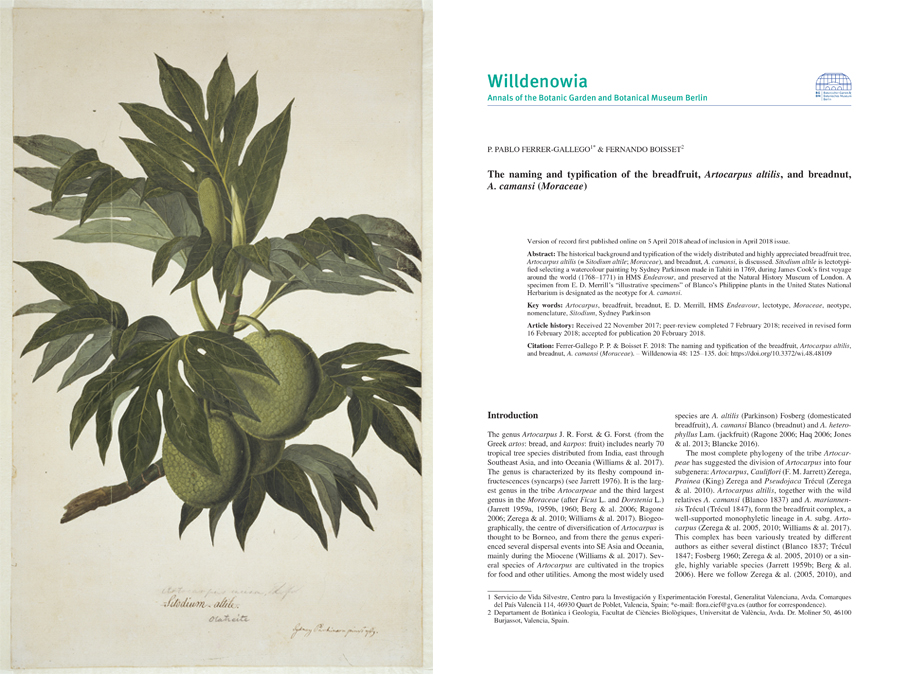
What has your professional career been like so far?
From my third year at university, I started to work in the morning, as I found a job that allowed me to combine my studies with work. I was working for the city council in Valencia, at some educational workshops for primary and secondary schools. From April until July, I was visiting schools and spending an hour per class designing didactic notebooks related to the environment. I particularly remember two out of these workshops: one on animal conservation and another on wooded streets in Valencia. The job also included a school programme in which I was a guide at the Zoo of Valencia and the Natural Science Museum of Valencia (Palaeontological Museum), both at the park Jardines del Real (Viveros) at the time.
I was not earning much with this job, but it allowed me to live in Valencia and buy books, although what I was looking for the most was getting myself a binocular magnifying glass, a tool that I deemed absolutely essential for improved studies on plants. And I eventually got one!
I remember that during my fourth year, because of the impossibility of further combining my job with my studies, I could not attend the second-term module on Cormophytes. It was such a big shame, but I truly could not reach an agreement so that I could attend classes without having to quit my job. The situation called for a decision and as you may have imagined… I obviously stopped going to class. I needed that magnifying glass no matter what!
During the last year of the degree, I found out that the Department of Botany was offering a vacancy to collaborate with Miguel Guara in the study of flora in the Valencian Haunting Reservation of Muela de Cortes de Pallás (Valencia). I was truly intrigued by this vacancy and, although it is true that I wanted to finish my studies well, I thought that this was a rather interesting opportunity. With Esther’s help -my partner both at the time and now, who encouraged and helped me to apply for the position-, I prepared a cv and we handed it in to professor Guara, who was not at the moment in his office so, since it was the last day within the deadline, I remember sliding it under the door. I do not really know why this moment is stuck in my memory and, although I guess that this is not the best way to introduce yourself, it is how it went. And, in the end, I was selected by Guara along with other four students.
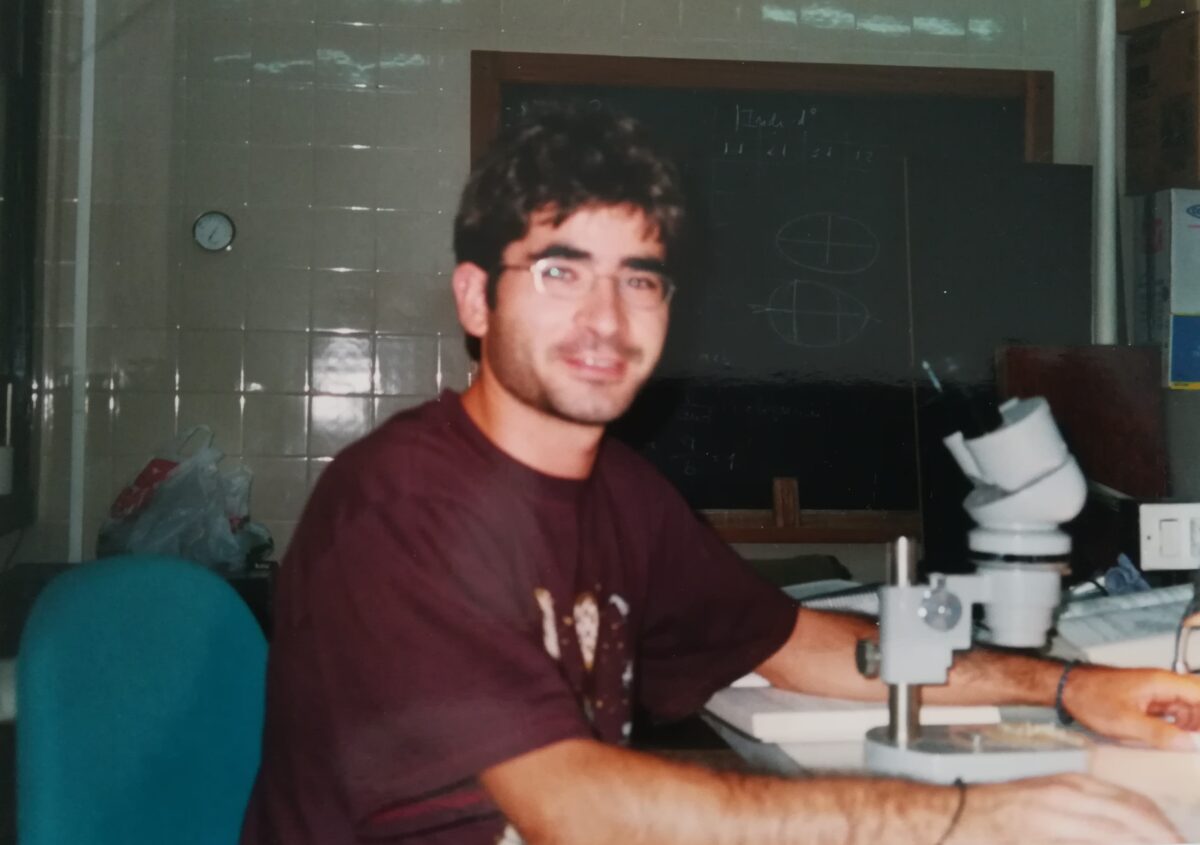
And so the fieldwork trips and visits to Cortes de Pallás started. We were five students for the first trip, but later only two of us remained. The scholarship lasted for two months starting from May, 2002, but I remember working on the project until later that year. Miguel would let me work at his laboratory, gave me a pair of keys and arranged his library for me. And I would go to the laboratory every day after class to continue with sample identification- samples that we gathered during our trips and botanising sessions in Muela de Cortes- and the preparation of a herbarium that we elaborated with all those plants that had been collected during the 2002 campaign. The next year Miguel offered me a research grant for the whole year, which allowed us to carry on with the study of the vascular flora of that territory.
Once the grant was over, we thought that it would still be very interesting to continue delving into the study of plants from the area. We deemed it best to undertake a PhD thesis, and for that reason I enrolled in PhD courses from the programme “Biodiversity and Evolutionary Biology” offered by the Cavanilles Institute, and we started to ask for scholarships. Although we inquired for a handful, they were rejected to us for a “lack of scientific interest in the proposal”. However, rather than getting upset, this situation encouraged me even more to keep on trying, and so a year later we presented the Research Project and I had a viva on the DEA (Advanced Studies Diploma). Having completed these two steps, both papers presented to the two examination boards, the PhD was the next goal.

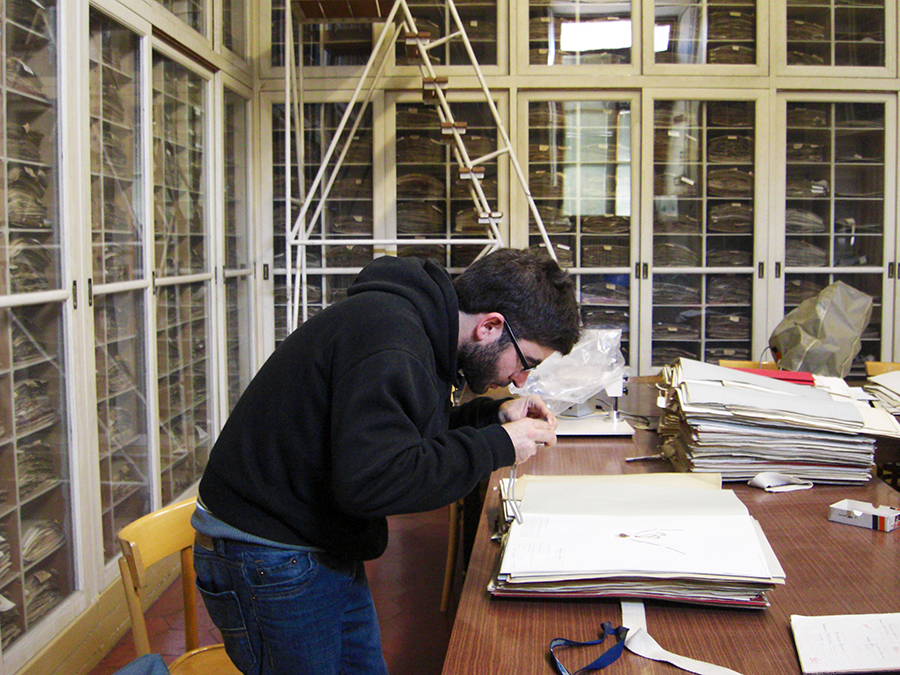
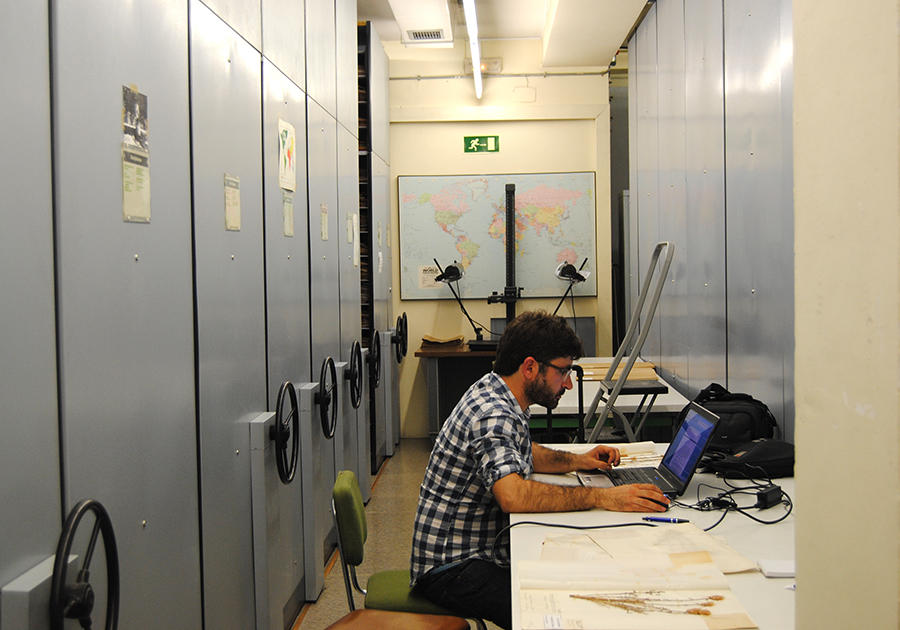
Then, given the circumstances, I decided to carry out the PhD thesis without any fundings and gave myself completely into the study of vascular flora in the Site of Community Importance Muela de Cortes y Caroche. Throughout 2003 and 2004 I visited the area several times, botanising from dusk to dawn, plant press after plant press. I used to drive my parent’s car, a Fiat Fiorino van that allowed me to carry the heavy presses and stay overnight during those spring and summer nights in the mountains. As I finished collecting plants, I pressed them, had dinner and then went straight to sleep so that I could start working first thing in the morning the next day.
There is this funny story that I remember from those days. Once in Muela de Bicorp, after having pressed the plants and already at nightfall, I was inside my van and ready to go to bed when I saw some lights that seemed to come from two torches. The lights kept on coming closer and closer to the vehicle and, although I could not fully understand what was going on, I must admit that at some point I felt a bit scared. The lights finally reached the car at the same time that someone knocked at the window, and it was the police. I got off the van, they asked me some questions and I showed them the presses, the bags with fresh plants, all the materials and books that I was carrying for botanising, and told them what I was doing there. It seems like they were looking for me because a local resident had told them that they had seen me wandering around the area for days, driving a white van, and so they wanted to find out who I was. We chit-chatted for a while until they left and I remained there, with my plants, in the middle of the mountains.
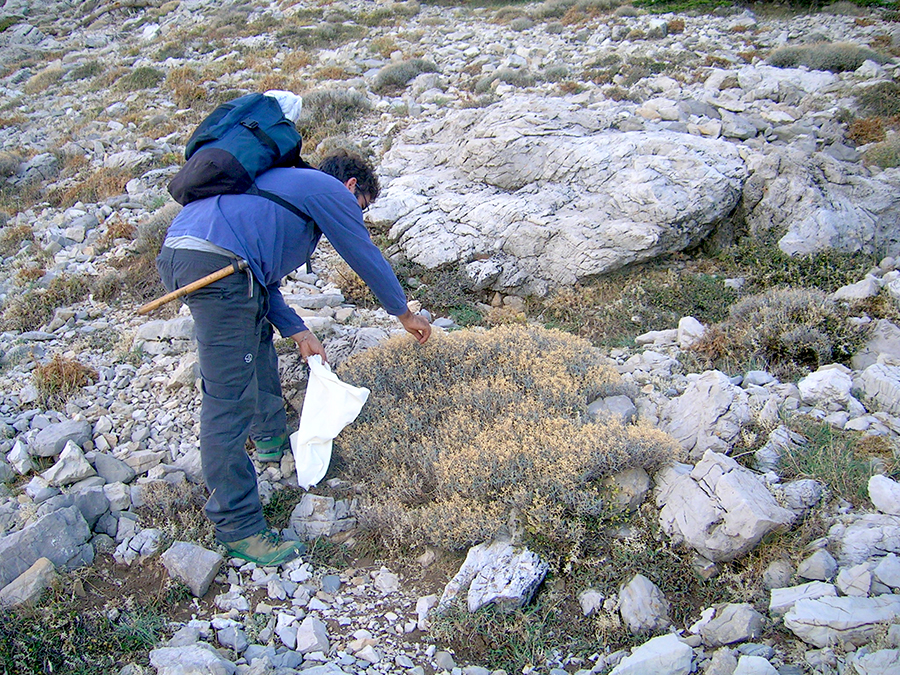

After two years of intensive collection and preparation of samples, I started to struggle with money. I had been saving up quite a lot from that scholarship that I had received years before, but it was mostly my parents the ones who were economically helping, supporting me at all times. In any case, I felt like I needed to either speed up the pace of the study or receive a scholarship (which I knew was unlikely) or else I would, perhaps, not be able to finish my thesis.
On June, 2005, on my way to my work area, leaving the village Quesa, I received a phone call. It was professor Rafael Currás, whom I knew because he used to spend some time at the laboratory where I was, and especially because he shared an office at the Department of Botany with Miguel Guara. We were friends then and still are. Then, Rafael called and told me that there was a vacancy for a botanist at a centre from the Ministry of Environment of the Generalitat Valenciana, more specifically at the Bank of Forestal Seeds (currently within the CIEF, Centre for Forestry Research and Experimentation in the Generalitat Valenciana). This was a turning point in my professional career.
At the interview I met Toni Marzo, technical director of the Bank and the CIEF at the time. I particularly remember how Toni walked me through the centre and how kind he was to me, and how after a couple of days I was notified that I would start working there. That is how it went, and on the 1st July, 2005, I started my path in the Forest Seed Bank, in an international project for the conservation of germplasm in Mediterranean plant species. Christophe Zreik was my colleague, a friend of mine with whom I still work at this same centre. We had the opportunity to travel together to different Mediterranean countries to get to know those institutions working for the conservation of flora.


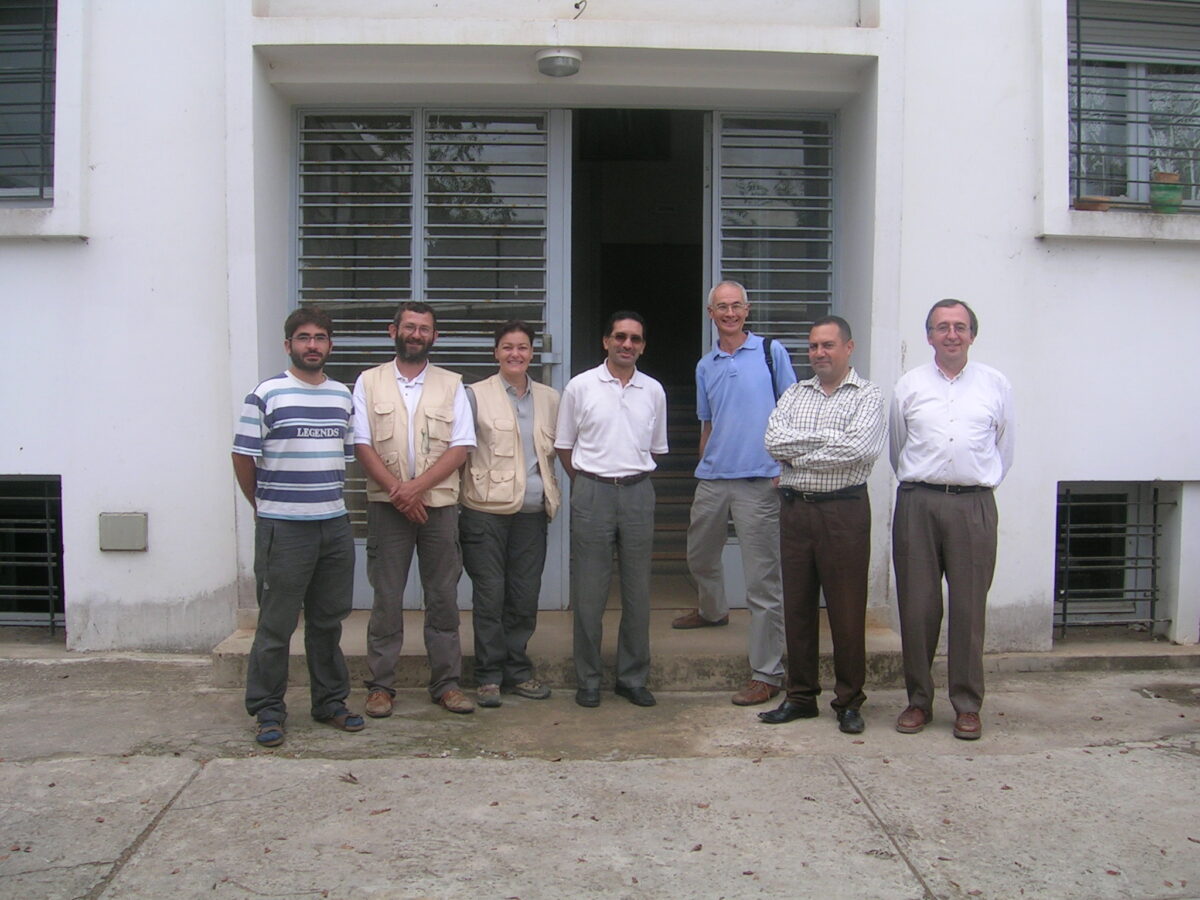
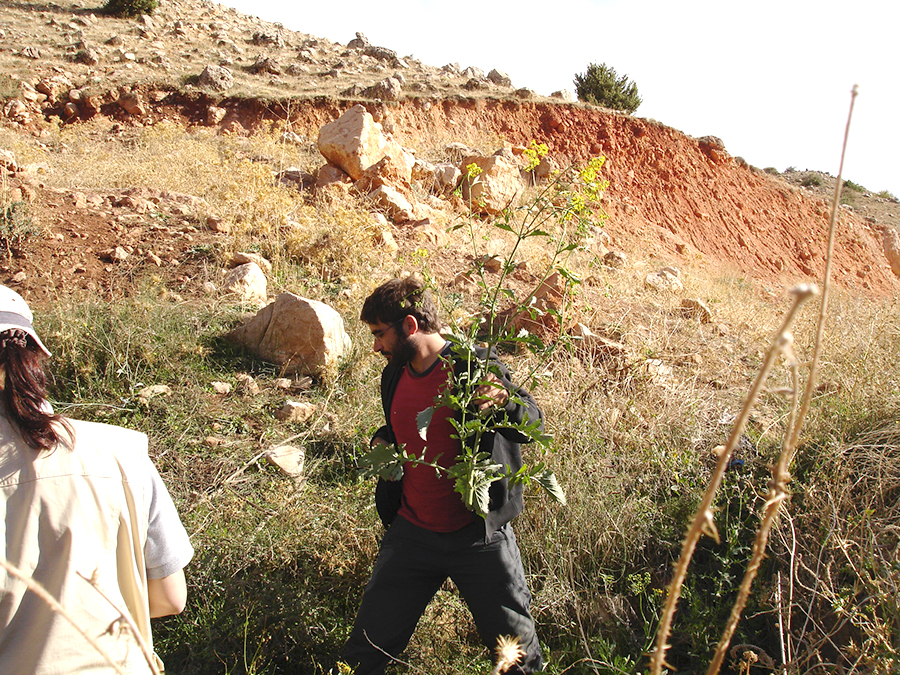
After this project, we continued with a similar one, on an international level as well, this time with the participation of more nations, including African countries. Morocco’s involvement in the project allowed me to travel to the country several times and collaborate in a series of expeditions for the recollection of seeds of species of interest for the conservation and study of vegetal samples. As we finished the project, I joined the group for the conservation of endangered flora of the Generalitat Valenciana’s Servicio de Vida Silvestre (Wild Life Service), coordinated by Emilio Laguana and Juan Jiménez. Part of this group, more precisely the one dealing with terrestrial flora, worked at the CIEF.
What about my PhD thesis, then? My job did not leave me any time for it until 2010, when I finally took it up again: after pondering and picturing how the comeback would be, and specially thanks to my friend Inma Ferrando’s constant encouragement, I finally decided to finish what I had started. On December that year I took the dust off the files and started again, determined to finish it, and after four years of very hard work, with the help of multiple people, on the 14th December, 2014, I had a viva on my PhD thesis.

I was asked to represent the Faculty of Biological Sciences in the new doctors’ inauguration act at the Office of the Principal of the University of Valencia, for which I was very honoured. Moreover, owing to my work for my thesis and the contributions we had been making via publications, I opted for the Award for outstanding PhD thesis, which I received. This was one of the happiest moments in my life. Two years after the reading of my thesis I came back to the Office of the Principal with my whole family, to a solemn act that made me feel humbly proud of my work, efforts, sacrifices and dedication.
You are currently working at the CIEF. What is your job about?
I am a technician of the Servicio de Vida Silvestre (Wild Life Service) at the CIEF department, where I develop my work on endangered plant conservation biology.
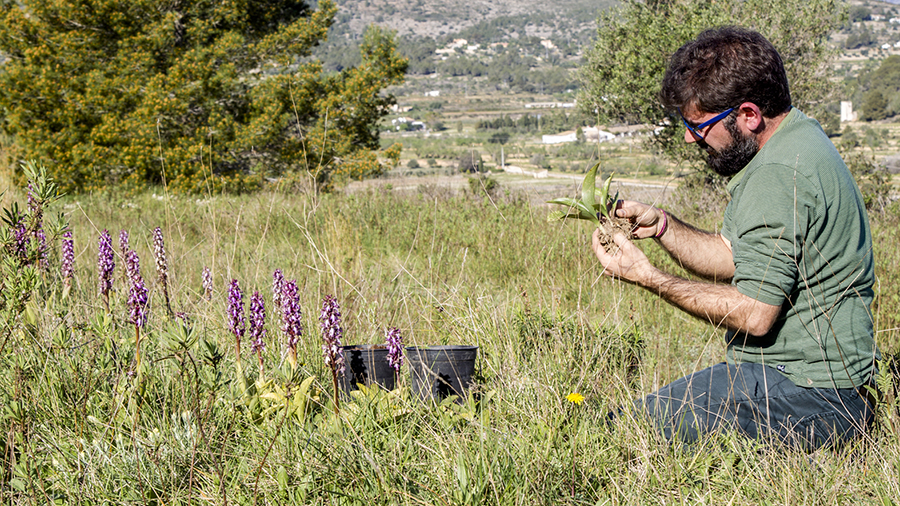
The group I am part of is in charge of the managing of endangered species’ germplasm, as well as the conservation and recovery of disappearing plant populations. Our tasks range from the location of populations of these endangered species to the recollection and handling of their germplasm for its later conservation in the Banco de Germoplasma de la Flora Silvestre Valenciana, BGFSV (Wild Flora Germplasm Bank of the Generalitat Valenciana) to the physiological study of seed germination and plant production for the different conservation, recovery and handling plans for these species in their natural environment. All this chain of work demands for a strong commitment, not only from a technical and practical point of view, but also from a more intellectual perspective.
Your specialty is the conservation of endangered plant species, what interested you in this field of study?
My professional activity is centred around this area, a field that truly interests me for its important challenges and demands of constant preparation and updating your information. A greatly complex work environment entailing full responsibility, I want to delve even more into this world to which I still have a lot to contribute.

Apart from working for the Generalitat Valenciana, I also collaborate with some professors of the Department of Botany of the University of Valencia, of the Botànic —Miguel Guara, Rafael Currás, Isabel Mateu, Fernando Boisset, José A. Rosselló, Felisa Puche, Gonzalo Mateo, Jaime Güemes, etc.- or of the Faculty of Pharmacy -Juan B. Peris, Gerardo Stübing, etc. —. I collaborate with the Universitat Politècnica de València (Technical University of Valencia) and other Spanish universities as well, with which I have been carrying out collaborative projects for a while.
What kind of projects are you carrying out?
Conservation biology is my main interest and passion, but I also work on the taxonomy of some groups. I am fascinated by plant genera such as the Teucrium, Sideritis, Thymus, Limonium and Centaurea, among many others. Another field of study that thrills me and in which I feel comfortable is botanical nomenclature.

I am collaborating in different projects ranging in type and subject. I find my collaboration for the elaboration of the Inventario Español de los Conocimientos Tradicionales (Spanish Inventory of Traditional Knowledge) to be highly rewarding, both the inventory on wild diversity and on cultivated plants. I also take part in other projects of a humbler nature, such as the physiological study on the response of species adapted to salt stress environments, or the study on the genetics and karyology of Valencian plant species and hybridity processes. I carry out practical projects as well, such as the study on forest ecological restauration and social participation in altered environments and post-fire areas, a study on which I am co-tutoring a PhD thesis.
Apart from such projects, I currently collaborate with several work groups from different universities and research centres, some foreign, on the tutoring of final degree and master dissertations and the co-authorship of studies on nomenclature or the description of new plant species.
Whose disciple do you consider yourself to be?
I consider myself as a conservationist biologist, and in this branch I have had the opportunity to learn from several botanists, people with whom I have studied and worked together all this time in the different projects in which I have participated. I would like to have a special mention for Emilio Laguna, with whom I have worked for many years and still do today. I like to see myself as a loyal disciple of his conservation doctrine, both regarding flora micro-reservations (network of areas for plant conservation, regulated by local administration) and the staunch conservation of endemic plants.
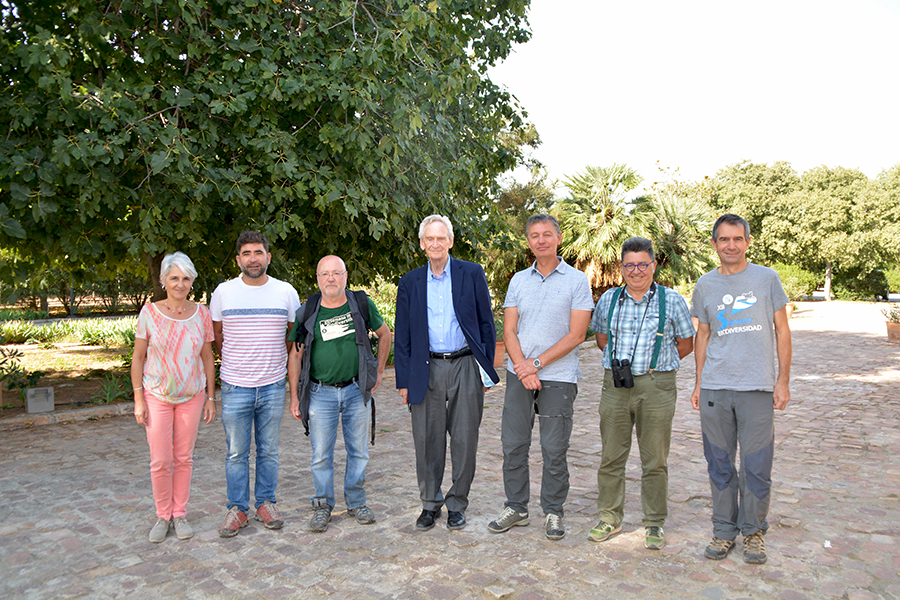
During the first years after the degree, I also learned a lot with Miguel Guara and, especially during that first period of my professional path, with Toni Marzo and Ragel Currás, from whom I learned a series of abilities and dispositions that have proved very useful in my professional life. Other people who have taught me about work and navigating the world of Botany include Juan B. Peris, Roberto Roselló and Josep A. Rosselló, with whom I have shared important moments of effective learning.
Lastly, I would also like to thank my superiors Emilio Laguna, Rafael Currás and Tony Marzo for giving me the opportunity of getting to meet people that have become very important for my professional and intellectual careers.
You are also working on a more personal project about viticulture. Tell us about this project.
Besides Botany, I am also highly interested in viticulture and oenology. I am part of a family project: my two brothers Miguel Ángel and Raúl, my parents and I work on the family vineyard to make natural and organic wine from ecological viticulture, completely environmentally friendly. Ever since I can remember, I have worked as a farmer, helping my family with vine cultivation; I have grown surrounded by vineyards and my childhood is naturally linked to the rural world and agriculture. Since 2012 we make our own wine in a hand-made, traditional, ecological and alternative way.


As a result, we obtain a product with which we are all greatly satisfied. We feel fulfilled and pleased about being able to make a high-quality product while also respecting nature: a high-quality wine whose elaboration process does not require any additives, and instead can be made solely through the yeast fermenting of the grape, and nothing else. This is our wine, ENDEMIC, and how we understand viticulture, agriculture and life as a whole.
A brand supporting conservation of cultural and botanical heritage. What values do you intend on conveying?
Respecting nature is key to a healthy environment, a healthy place to live and work in sustainable agriculture. Natural cultural heritage —whether tangible or intangible— and botanical or environmental heritage are connected. In my opinion, they cannot be understood separately, but rather must be preserved together. I think we have mistreated the environment for a long time, we have been very aggressive, even in our agriculture, that we now consider to be ecological.
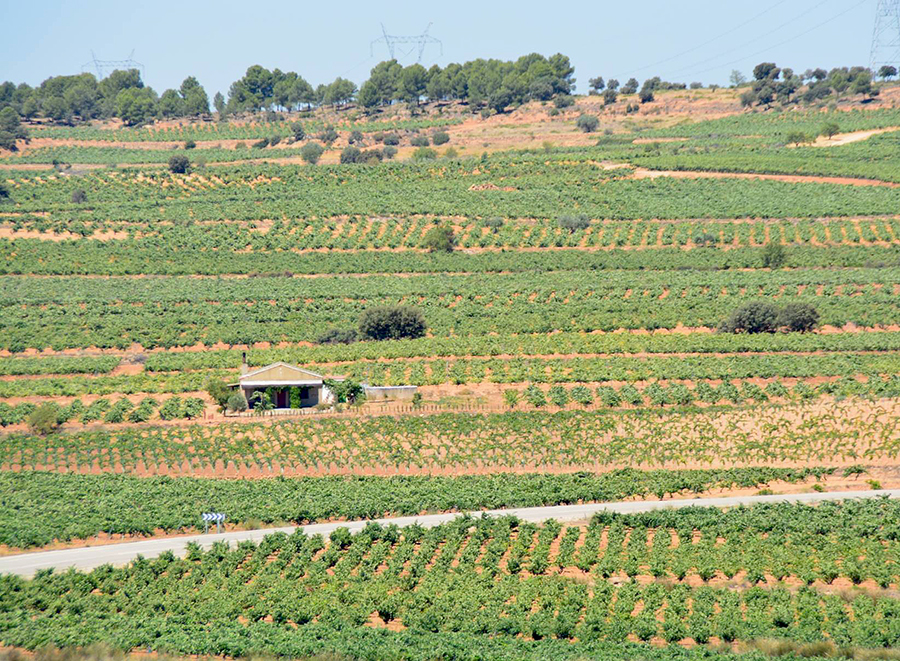
The situation is critical at the moment; as people are saying around here, we are in an “emergency” situation. For this reason, we need not only a society with a deep environmental awareness —which will take us long to achieve, if at all— but also environmental policies to save and preserve what remains of nature. But, most importantly, what we need is to recover part of our nature, which we have lost to our irresponsible practices and abuse to the environment. In that respect, conservation biology and ecological restauration face a great challenge, what I like to call “biology of recovery”.
What is your relationship with the Jardí Botànic of the University of Valencia?
I love the Botànic, it is a space full of life and diversity that I have visited ever since I came to Valencia as a student. I love to get to see its plants in person and I find it to be a cozy place.
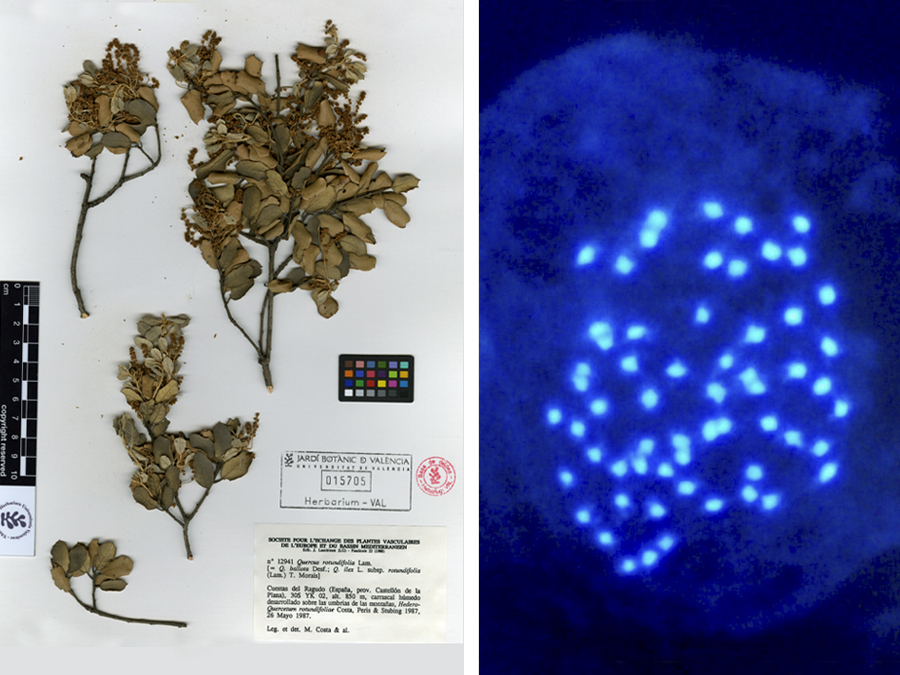
On the other hand, I feel great about my current collaborations with several of the Botànic’s researchers, contributing in any way that I can, from herbarium sheets and seed samples to my work in the different studies that we are carrying out together.
Which botanist would you have liked to meet in person?
I would have definitely loved to meet Heinrich Moritz Willkomm, who I consider to be an outstanding figure in botany. I admire his Prodromus Florae Hispanicae, which I think is the most relevant work on Spanish flora to date. I would have obviously also loved to meet Carlos Pau.
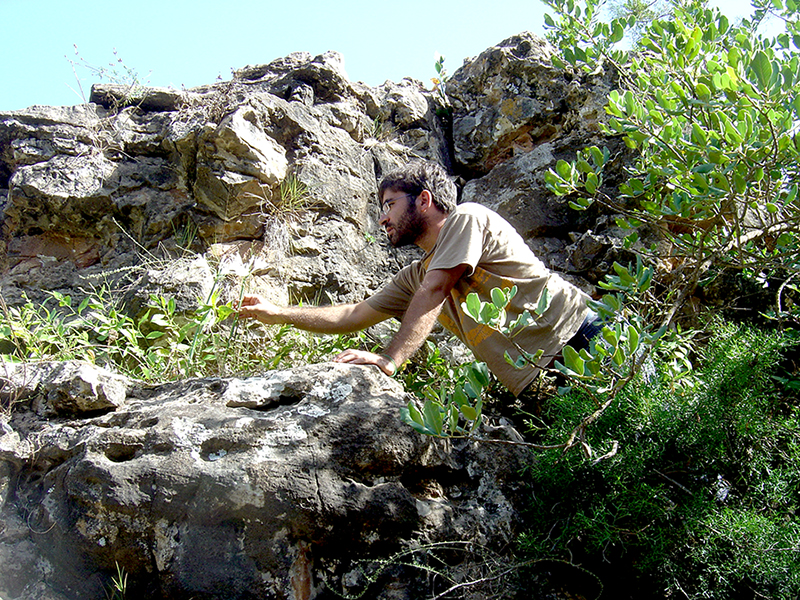
What’s the worst part of your job? And the most rewarding?
Conservation biology, and especially ecological restauration of endangered spaces, habitats and populations can be very complex. Settling a population of an endangered species in the natural environment can be extremely difficult: many are the factors and conditionings involved that you have to take into consideration when seeking success. This side of our job can be very discouraging and frustrating, but this is precisely why such species need our help. I reckon that if things were easier in conservation biology it would not be as meaningful and necessary as it is. Despite all difficulties, however, it is very rewarding, getting to see studies do well, projects that manage to settle populations of endangered species, ensuring that plants will grow and reproduce successfully.
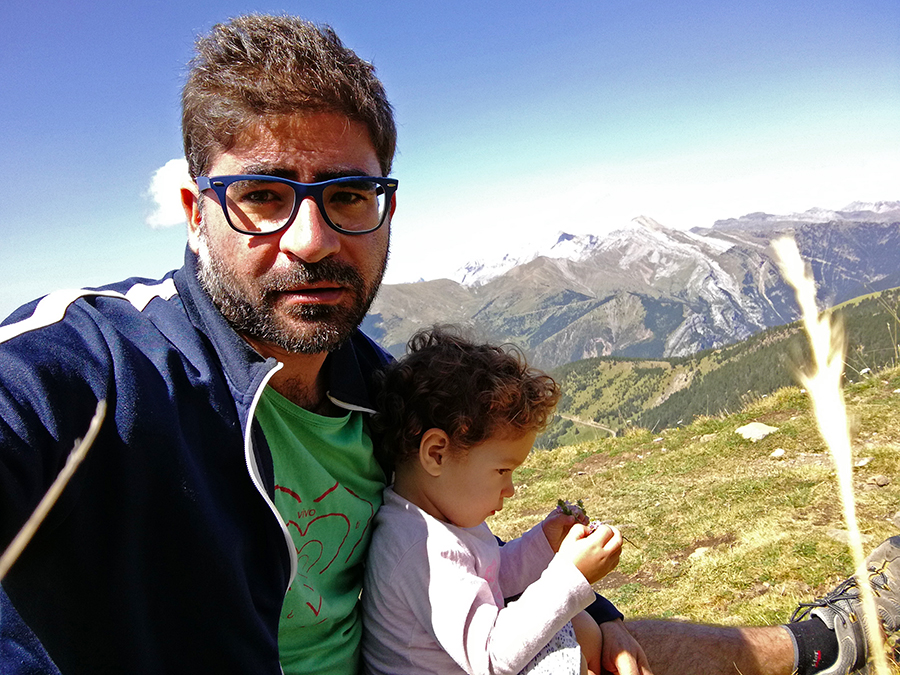
Working in a group is also very enriching. I think that not much can be achieved without good teamwork; besides, success is much more rewarding when shared with others. Additionally, I love seeing how people that initially felt alien to certain conservation tasks —after conversations and effective communication, fieldwork trips together, basically getting to know more and becoming closer to endangered species—, that these people may end up being fully committed and worried better than anyone about such tasks. And, most importantly, that they may truly see the importance and urgency in what they are doing.







